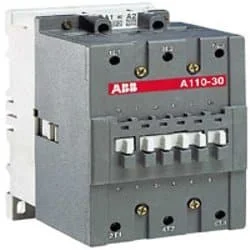Contactors and relays are essential components in electrical systems, used to control circuits by opening and closing contacts. Despite their similarities, they serve different purposes and face distinct issues. In this article, let us explore common problems associated with contactors and relays, their causes, and potential solutions.
Contactors
Contactors are used in applications requiring high current capacity, such as industrial motors, lighting, and heating systems. They are designed to handle large electrical loads and are typically more robust than relays. Issues with contactors can result in unplanned plant shutdowns and loss of production. Here are the most common issues with a contactor and the best solution for those issues.
Common Issues with contactors
- Electrical Overload:
- Cause: Excessive current flow can cause overheating and damage to the contacts.
- Solution: Ensure proper sizing of the contactor for the load and use protective devices like fuses and circuit breakers.
- Mechanical Wear:
- Cause: Repeated opening and closing can lead to arcing and pitting, deteriorating the contact surfaces.
- Solution: Regular inspection and maintenance to replace worn contacts1.
- Environmental Factors:
- Cause: Dust, dirt, and moisture can accumulate on contacts, affecting performance.
- Solution: Keep the contactor clean and dry, and use enclosures to protect against contaminants1.
- Poor Maintenance:
- Cause: Lack of lubrication and failure to inspect can lead to increased friction and wear.
- Solution: Regular maintenance schedules to lubricate moving parts and inspect for early signs of wear.
- Improper Sizing:
- Cause: Using an undersized contactor can cause excessive stress and overheating.
- Solution: Ensure the contactor is appropriately sized for the load it controls.
- Voltage Fluctuations:
- Cause: Voltage spikes or drops can cause arcing or welding of contacts.
- Solution: Use voltage stabilizers and surge protectors to mitigate fluctuations.
Click here to read more about the working of contactors.
Relays
Relays are used in applications requiring lower current capacity and are often found in control circuits. They are ideal for switching smaller loads and providing electrical isolation between different parts of a system.
Common Issues with relays
- Contact Wear:
- Cause: Frequent switching can cause contact erosion and increased resistance.
- Solution: Use relays with appropriate contact ratings and replace worn contacts regularly.
- Coil Burnout:
- Cause: Overvoltage or prolonged energization can cause the coil to overheat and fail.
- Solution: Ensure the relay coil voltage matches the control circuit voltage and avoid continuous energization.
- Environmental Contamination:
- Cause: Dust, moisture, and other contaminants can affect relay performance.
- Solution: Use sealed relays or enclosures to protect against environmental factors.
- Incorrect Installation:
- Cause: Improper wiring or mounting can lead to malfunction.
- Solution: Follow manufacturer guidelines for installation and wiring.
- Mechanical Failure:
- Cause: Physical damage or wear to the relay mechanism can prevent proper operation.
- Solution: Inspect relays for mechanical damage and replace faulty units.
Read more: Working principle of relays
Conclusion
Both contactors and relays are vital for controlling electrical circuits, but they are prone to specific issues that can affect their performance. Regular maintenance, proper sizing, and protection against environmental factors are crucial for ensuring their reliability and longevity. By understanding and addressing these common problems, you can enhance the efficiency and safety of your electrical systems.

